Few countries can claim to offer visitors the perfectly co-existing diversity of Peru. For thousands of years, civilization after civilization has layered the land with an abundance of cultures, treasures, traditions, monuments, colors, and flavors. Nature held nothing back when it blessed Peru with some of the tallest peaks in the Americas, endless rainforests, mirrored lakes and unforgiving deserts with sand dunes as big as mountains. Peru’s climate runs the gamut from the very dry and hot desert through the evergreen rainforests to the frigid everlasting glaciers and everything in between. The result is probably one of the richest countries in the world, treating its visitors to an unforgettable experience, certain to awaken and inspire all senses.
Eleven sites in Peru have been designated UNESCO World Heritage Sites and, fortunately for the visitor, many of them are easy to reach and explore with Spiced Destinations.

Peru
General Information
Overview:
Ancient Peru was the seat of several prominent Andean civilizations, most notably that of the Incas whose empire was captured by the Spanish conquistadors in 1533. Peruvian independence was declared in 1821, and the remaining Spanish forces defeated in 1824. After a dozen years of military rule, Peru returned to democratic leadership in 1980.
General Facts:
- Size (land area): 1,279,996 sq km (494 209 sq mi), Peru is slightly smaller than Alaska or as large as Spain, France, Portugal and most of Ireland combined.
- Population: 29,907,003 people divided between the following ethnic groups: Amerindian 45%, mestizo (mixed Amerindian and white) 37%, white 15%, black, Japanese, Chinese, and other 3%
- Border Countries: Bolivia, Brazil, Chile, Colombia & Ecuador
- Elevation Extremes: lowest point: Pacific Ocean 0 m; highest point: Nevado Huascaran 6,768 m (22,204 ft)
- Religion: Roman Catholic 81.3%, Evangelical 12.5%, other 3.3%, unspecified or none 2.9%
- Languages: Spanish 84.1% (official), Quechua 13% (official), Aymara 1.7%, Ashaninka 0.3%, other native languages 0.7% (includes a large number of minor Amazonian languages), other 0.2%
Source: The World Factbook
Geography:
The country’s surface area is 494,209 square miles, which makes Peru the third-largest country in South America. It is slightly smaller than Alaska and approximately the size of France, Spain, Portugal, and Switzerland combined! With almost 1500 miles of coastline on the Pacific Ocean, Peru is one of the world’s largest producers of fish and seafood. Peru shares borders with Brazil, Colombia, Ecuador, Bolivia, and Chile.
What to buy:
Peru has beautiful and authentic crafts that you won’t find anywhere else in the world: hand-woven ponchos, rugs, and sweaters knitted from alpaca hair. The best-sellers are gold and silver filigree jewelry, along with llama fur rugs. Iquitos is the place for jungle handicrafts and native weapons, including blowguns and spears. In Cuzco, you can find almost anything made from llama or alpaca wool. Lima's trendy Miraflores section is rich in chic boutiques and shops. And don’t miss the Centro Camino Real shopping center in suburban San Isidro!
(Shopping in Lima: 10:00 a.m. to 1:00 p.m. – long lunch break – and then 4:00 p.m. to 8:00 p.m. Monday through Saturday.)
What to eat:
Peru is one of the few countries in the world where its cuisine is an art form comprising both autochthonous specialties and international dishes. Developed from the best of Spanish cuisine blended with rich traditional cultures, the food in Peru is a unique gourmet adventure. The seafood here is fresh out of the Pacific and done up in a thousand ways. Try the ceviche (raw white-meat fish or shrimp marinated in lime juice) or visit the local chifas for the best Chinese food south of San Francisco. You don’t want to leave Lima without trying the chupe (a tasty paste made of shrimp or fish) or the papas a la huancaina (potatoes smothered in a spicy sauce ). Notice: Aji is a powerful Peruvian hot sauce served with many dishes. In the Iquitos and the Amazon regions, you will want to try the local fruit and the exotic river fish. Cuzco specializes in an infinite variety of corn and potato dishes (over 100) so they never run out of new treats for visitors. The traditional spirit in Peru is pisco and the national cocktail is the Pisco Sour which is served in sugar-rimmed stemware. Local Peruvian wines, such as Tacama, Tabernero or Ocucaje, are worth a try and Peruvian beer is just great.
What to wear:
Peru has every possible climate, from tropical coastal to high plains, from steaming jungle to snowcapped mountains and glaciers. The climate in Lima is coastal-mild, so if you’re traveling in June to September, pack for cloudy and chilly. If you’re visiting the jungle, dress lightly and expect rain from November to May. Cuzco's alpine altitude (11,444 ft.) means daytime temperatures around 50°F degrees and cold nights with a probability of rain from December to April. Arequipa is blessed with temperatures around 70°F and the rains are limited to January - March.
When to Travel?
Peru is the third-largest country in South America (larger than Spain and France combined). It borders Ecuador and Colombia to the north, the Pacific Ocean to the west, Chile to the south, and Brazil and Bolivia to the east. Three natural regions divide the country: the coast, highlands, and jungle where you will find 11 ecological regions and 84 of the world’s 117 different types of “life zones”.
The Pacific Coast
Along the pacific coast, you will find December through April to be the hottest months, so light clothing is recommended. However, you should pack clothing you can layer in the evening when the temperature tends to drop. June and September are the coolest and dampest months of the year making warm clothing and rain gear essential items. During the rest of the year, light clothing, a sweater, and long pants will keep you comfortable. In the north, the coast is usually hot year-round, with a brief rainy period in November and December. You will find that the central and southern coast has two distinct seasons, the winter months are from April to October and summer is enjoyed during the months of November through March.
The Highlands
The highlands are the region of Peru where the Andes Mountain ranges dominate. The northern Andes are lower and more humid than the rest, the central Andes are the tallest and steepest, where the highest peak, Huascaran, sits at 6,768 meters (approximately 22,204 feet) above sea level. The southern Andes are also known as the “altiplano or high Andean plateau. The climate is dry in this region and clothing that can be easily changed is recommended as the weather can change on a moment’s notice. April through October are ideal months to visit this region, with sunny days and very little rain. Daytime temperatures can rise up to 24 degrees Celsius (75 degrees Fahrenheit), with nighttime temperatures dropping to minus 3 degrees Celsius (27 degrees Fahrenheit) and November through March is the rainy season. If you are planning to visit this region, warm sweaters, long pants, and waterproof outer gear should be your core wardrobe choices.
The Jungle & Rainforest
The jungle is located in the east, covered by vegetation in the Amazon River basin and is the largest region in Peru. It is a tropical area, so lightweight clothing that covers your arms and legs are essential for protection against insects. The months of April through October are considered to be the best times to visit the lower jungle when the climate will be warm, wet and rainy with temperatures above 35 degrees Celsius (95 degrees Fahrenheit). Of course, you will also want to pack a hat, boots, insect repellant, sunglasses and sunscreen as well. In the high jungle, you will find a more temperate subtropical climate and a heavy rainy season between November and March, sunny days between April and October, with occasional cold periods with a temperature drop to 8 degrees Celsius (46 degrees Fahrenheit) between May and August.
Important Festivals
September – “Mistura” Food Festival-Lima, Peru
Peru has been chosen as the “World’s best culinary Destination” for the past several years and every September the city of Lima hosts “Mistura, the largest food festival in Latin America. The word Mistura is the Portuguese word for the mixture which reflects the natural culinary fusion of dishes created from the diverse nationalities of this country: Spanish, African, Chinese, Japanese and Italian, just to name a few. Famous chefs from around the world travel to Lima to participate in the festival and celebrate Peruvian cuisine. Watch the video here.
June 24th – “Inti Raymi” Festival-of the Sun-Cusco, Peru
This theatrical event takes you back in time 500 years to the glory days of the Incan empire, celebrating the Incan New Year and winter solstice, during the time when the sun was furthest from this side of the earth and Inti needed to be indulged.
Sapa Inca (the emperor) along with his counterpart Mama Occlo, priests, costumed snakes, pumas, and condors make their way to the Sacsayhuaman stone ruin’s where the pageantry unfolds. The procession begins at Qorikancha (the sun temple) then winds through streets filled with music, dancing, scattered flowers, and ladies with brooms who sweep away the evil spirits.
February-Virgin of Candelaria Festival-Puno, Peru
Beginning February 1st and continuing for the next eighteen days, Catholics celebrate the Virgin of Candelaria with a carnival in the streets. On February 2nd, after paying homage to the Virgin Mary, thousands of costumed dancers and musicians move around the city, creating an endless parade. On the first Sunday in February the city’s stadium hosts a competition featuring up to 70 groups of dancers who have come from the surrounding communities which are followed by more dancing in the streets. On the eighth day of the festival, huge parades are the highlight with as many as 300 people dressed in devil and demon outfits who will fill the city with music and magic.
Travel Highlights
The Coastal Desert
Peru’s coast on the Pacific Ocean is mostly desert, spanning from 10 to 100 miles inland. Some of the country’s most interesting sites are found on this arid strip of land.
Lima: The city of Lima was founded by Francisco Pizarro in 1535, conqueror of the territory, and was the Viceroyalty of Spanish power in South America for about 300 years. Lima straddles the Rimac River and offers the visitor an array of colonial architecture contrasting with ultra-modern buildings. Its political center, the Plaza de Armas, retains all its colonial splendor and is today the site of important museums.
One must-see is the fabulous private collection of gold artifacts amassed by Miguel Mujica Gallo and willed to the Mujica Gallo Foundation. Then there is the comprehensive collection of the Larco Herrera Museum covering ceramic pieces spanning the known cultures of Peru, from the Chavin through to the Incas. One of the most visited features of the museum is its collection of erotic huacos and figurines. Lima has great hotels, wonderful restaurants, and interesting shops, both in the city center and in the modern suburbs of Miraflores and San Isidro. Not far from Lima are the ruins of Pachacamac, the largest coastal fortress at the time of the conquest.
Trujillo: Founded by Pizarro in 1536, Trujillo is a lush Eden set against the backdrop of the Andean foothills. The city is graced with many old churches, colonial architecture and beautiful balconies overlooking its busy streets. Not far away is Chan Chan, the center of the Chimu civilization. You won’t want to miss Huanchaco, where the fishermen use the traditional, long, narrow reed boats called caballitos to surf and fish. Trujillo is eight hours overland from Lima or one hour by air.
Sipan and Tucume: For a taste of living archaeology, travel into the northern desert to Sipan and Tucume, near the city of Chiclayo, where scientists are working in some of the most recently discovered sites in Peru. The museum at Lambayeque contains a large part of the treasure of Sipan, the richest cache of Inca gold found in modern times. And while you’re there, check out Tucume, where Thor Heyerdahl keeps a home, Casa Kon Tiki, amid intriguing adobe pyramids.
Paracas: This peninsula jutting deep into the Pacific Ocean comprises a national park, one of the richest marine reserves in the world, and even has a small resort-hotel from which to make forays to the local sites, including a museum with traditional ceramics and mummies. If you look up from Paracas Bay you can see the mysterious Candelabra figure etched into the face of a mountain by the sea.
Ica: A luxuriant haven surrounded by the dunes of the coastal desert and only half an hour from Paracas, Ica has an interesting museum with pieces from civilizations ranging from the early Paracas to the Inca period. It is also the birthplace of pisco, a powerful grape brandy that has become the national drink. Ica has adequate accommodations from which to visit the nearby ranches where Peru's famed Paso horses are bred. And if you want to see the mysterious Nazca lines, take a flight from the small airstrip by the Las Dunas hotel.
Nazca: Made world-famous by its mysterious line images, Nazca has several nice hotels from which to venture out over the enigmatic drawings covering the desert floor, some dating back before Christ. When seen from the air, the lines, some of which are up to 40 miles long, clearly depict a number of animals, flowers and a bird with a 300- ft wingspan. Direct flights from Lima to Nazca are also available.
The High Andes:
The Andes Mountains run like a north-south wall separating the coastal plains and deserts from the inland jungle. The range covers about a quarter of the country and harbors relics of Peru’s legendary civilizations, as well as some of the most popular tourist destinations:
Cuzco: At more than two miles above sea level, Cuzco has been a hub of civilizations from the time when it was the capital of the Inca Empire to the present, making it one of the oldest continuously inhabited cities of the Western Hemisphere. Cuzco’s rarified atmosphere takes a bit of getting used to, but its ample range of hotels, restaurants, and nightspots are a rich reward. From the city, you can take tours to the nearby ruins of Qenko, Tambomachay, and Sacsayhuaman, as well as to Ollantaytambo and Pisac in the Sacred Valley of the Incas…and don’t miss the fun at Indian Market held every Sunday morning.
Machu Picchu: The “Lost City of the Incas,” was unknown to western civilization until 1911. Modern visitors can see the terraces, palaces, fountains and the mysterious Temple of the Sun. But remember to set aside a full day for the excursion, or better yet, make advanced reservations for the comfortable little hotel at the ruins. A night in Machu Picchu is not to be missed.
Puno: The City of Our Lady of Peace, Puno rises on the shore of Lake Titicaca, the world's highest commercially navigable lake. According to tradition, the Sun God ordered Manco Capac, the first Inca, to rise from the lake and found the Inca nation. From Puno, you will want to visit the floating islands, where the Uros Indians have lived for generations, the mysterious funerary towers of Sillustani, and the Island of the Sun. Puno’s hotels are a comfortable base from which to explore the area. And there is a regular hydrofoil service across the lake and into Bolivia.
Arequipa: Rising from the very base of El Misti volcano, with its snowcapped cone reaching 19,000 ft into the sky, Arequipa is also known as the “White City” for its many constructions made from the white volcanic stone called sillar. The historical point of interest is the Monastery of Santa Catalina, a walled convent closed to outsiders for over 400 years and now open as a museum of the cloistered life.
Colca Canyon: Colca is the deepest canyon in the world, twice as deep as the Grand Canyon, and the only place on Earth where you can look at condors straight in the eye.
Huaraz: Right in the heart of the Callejon de Huaylas region, in a valley full of quaint villages, Huaraz is the staging area for some of Peru's most fascinating hiking tours. The city lies nestled in a privileged location between the “Black Range,” whose mountains have no snow, and the “White Range” of snowcapped peaks. Most visitors take advantage of the Huaraz stop to visit the 2,600-year-old fortress in the Chavin de Huantar ruins. The archeological site contains temples, circular and square plazas, altars, aqueducts, canals, and reservoirs. (Four hours overland from Huaraz or eight hours from Lima)
Amazonia:
Nearly 60% of Peru is an Amazonian jungle, but only 5% of the population lives there.
Iquitos: Peru’s second most important port is 2,300 miles upriver from the Atlantic and right on the Amazon River. Visitors can choose from hotel accommodations in town, or the quaint jungle lodges one to four hours downriver. The lodges range from cabanas (with private bath) to rustic shelters with camping out facilities. Several river cruises for 4–12 persons are available to take visitors on more hands-on visits to nearby Amazon tributaries. And if you venture into the jungle, you can visit the Yagua Indians, living near Iquitos, or the Huitotos and Shipibos, further into the bush.
Puerto Maldonado: Hard-core nature lovers will not want to miss this port on the eastern slopes of the Andes, the threshold to the Rio Heath Pampas Sanctuary, Manu National Park and the Tambopata Wildlife Reserve. There are two jungle lodges in the reserve area from which you can see 547 avian species, 1,100 butterflies, 150 species of dragonflies and a variety of mammals, including the playful giant otter of the Amazon. Puerto Maldonado can be reached from Lima by air via Cuzco. Yellow Fever Vaccination is required.
Suggested Journeys
 Affordable Peru
Affordable Peru8 Days / 7 Nights • Daily arrivals in Lima, year-round
Peru offers some of the most intense travel experiences in South America, and with such destinations, creating a relatively short and comprehensive program while keeping the budget within the affordable range, is not an easy task. However, Affordable Peru, does just that! You may travel on any day of the week, year round.
Featuring: Lima, Cuzco, Sacred Valley & Machu Pichu. This program is based on shared services, with bi-lingual guides at each location.
 Northern Kingdoms of Peru
Northern Kingdoms of Peru3 Days / 2 Nights • Daily arrival in Chiclayo; year-round
Featuring: Chiclayo & Trujillo
The dry Northern Coastal Desert of Peru has preserved some of the most awe-inspiring remains of ancient cultures. On this short trip, we explore the secrets and traditions of several long-gone civilizations, such as the Moche. See perfectly preserved mummies, jewelry, weapons and working tools that were buried in elaborate burial sites for over a thousand years. Visit Adobe Pyramids and Chan Chan, the largest Adobe City in the world.
 Peru - The Luxury Journey
Peru - The Luxury Journey18 Days / 17 Nights • Sunday arrivals in Lima, all-year-round.
Featuring: Lima, Arequipa, Colca Canyon, Lake Titicaca, Sacred Valley, Machu Picchu, and Cuzco & Amazon Cruise.
The most prestigious hotels & lodges, as well as the most capable private guides, and the comprehensive, yet balanced itinerary, are the ingredients of this journey, perfectly designed for a trip of a lifetime.
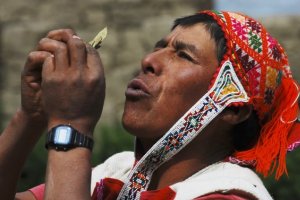 Highlights of Peru
Highlights of Peru8 Days / 7 Nights • Suggested Friday arrivals in Lima
A Journey by Private Car & Guide
Featuring: Lima, Sacred Valley, Machu Picchu & Cuzco
This Journey captures the essence of the Peruvian treasures, such as the gold jewelry kept in the Larco Museum in Lima, or the Colonial art at the vast Cathedral of Cuzco. But perhaps more important, it captures the “untouchable” treasures of the Peruvian Heritage and History. Through this carefully crafted itinerary, you will pay tribute to one of the most enticing countries in the world.
 Lima, the Culinary Capital of Latin America
Lima, the Culinary Capital of Latin America4 Days / 3 Nights • Daily arrivals in Lima; year-round
Since the foundation of Lima and for the last 500 years, Limeños have incorporated the customs of people from all over the world who have come to live here. That is why Lima cuisine today is a delicious fusion of Chinese, Japanese, Inca, Spanish, Italian and African influences. This celebration of culinary experiences is a perfect way to commence your exploration of Peru; or may serve as a sophisticated ‘getaway’ on its own.
 Peruvian Amazon Experience in the Tambopata Region
Peruvian Amazon Experience in the Tambopata Region4 Days / 3 Nights • Daily arrivals in Puerto Maldonado
Featuring: Exclusive stay at the Canopy Tree House at the Inkaterra Reserva Amazonica Lodge
A visit to the tropical rainforest is like entering another world. Two-thirds of all known plant and animal species make their home in these magical jungle regions, and hundreds of millions more are believed to be yet undiscovered. This 3-night Amazon experience allows you to have a brief glimpse into one of the world’s most important eco-systems, in one of Peru’s less explored regions.
Featured Properties
 Delfin Amazon Cruises, Luxury Expeditions to the Peruvian Amazon
Delfin Amazon Cruises, Luxury Expeditions to the Peruvian AmazonIn the heart of the Peruvian Amazon, one of the world’s most remote and virgin eco-systems; luxury river-cruising is being redefined. Delfin Amazon Cruises owns and operates the Delfin I & Delfin II Amazon River Boats. Both vessels sail the pristine Amazon River and its brunches on their 4 or 5-day cruises, year round.
 M/V Aria Amazon Cruise
M/V Aria Amazon CruiseExperience the world as it was at the very beginning of time. Sail the waters of the mighty Amazon.
Every week of the year, the award-winning Aqua Expeditions’ luxurious M/V Aqua takes 24 passengers deep into Peru’s Amazon wilderness to places only ever visited by only a fortunate few. Titilaka Lodge
Titilaka LodgePrepare to be overwhelmed; expect to be completely at peace, connected with the timeless spirit of Lake Titicaca, surrounded by intensely blue sky and water.
 Inkaterra La Casona, Relais & Chateaux
Inkaterra La Casona, Relais & ChateauxCusco’s first boutique hotel, reflects the city’s mélange of cultures and traditions. A striking 16th century mansion — one of the first Spanish constructions in Cusco — occupied by the first conquistadores and their mestizo descendants. This national monument is now an exclusive hotel located in the traditional Plaza Las Nazarenas, at the heart of the historical city.
 Inkaterra Machu Picchu Pueblo Hotel
Inkaterra Machu Picchu Pueblo HotelA select boutique cloud-forest resort considered “the Garden of Eden” by Condé Nast Traveller (Jan. 2007), lets you experience life at an exclusive royal Inca retreat for your stay. Enjoy the benefits of a de-stress massage at our mystical UNU Spa, and you will have the opportunity to participate in group eco-activities, such as bird watching or a guided Orchid walk, offered on the hotel' 12-acre grounds.
 Belmond Palacio Nazarenas, Cusco
Belmond Palacio Nazarenas, CuscoStep past walls of Inca stones and into a cloistered courtyard with an ancient fountain at its heart. But within these timeless walls, contemporary Cusco comes to life. Find a fabulous spa, the city's first outdoor pool and stylish restaurants serving cutting-edge local cuisine.
 Tambo del Inka - A Luxury Collection Resort & Spa, Sacred Valley
Tambo del Inka - A Luxury Collection Resort & Spa, Sacred ValleyNestled in the Urubamba valley, Tambo del Inka seems a world away from the stress of daily life and gives the traveler limitless opportunities to discover an ancient culture, enjoy nature and depart to Machu Picchu from its own train station.
 Amazon Expedition aboard the M/Y Cattleya Journey
Amazon Expedition aboard the M/Y Cattleya JourneyDescribing this marvelous ship and its physical qualities, as well as its excessive comfort, won't be enough in order to grasp the whole concept of getting to know the Cattleya, and sail on it along the magic waters of the Marañon river, Ucayali river and some parts of the amazing Amazon river.
 Aranwa Cusco Boutique Hotel
Aranwa Cusco Boutique HotelAranwa Cusco Boutique Hotel is the essence of luxury and comfort in the heart of the Inca city. A museum hotel built in a colonial mansion of the XVI century, which houses more than 300 pieces of art between paintings of the Cuzco school, colonial sculptures and carvings which transport us to the greatness of the time.
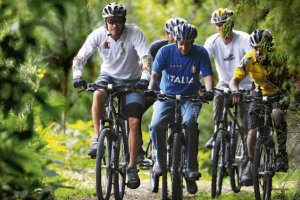 Aranwa Sacred Valley Hotel & Wellness
Aranwa Sacred Valley Hotel & WellnessAranwa Sacred Valley Hotel & Wellness is built on the banks of the River, on the lands of an old colonial hacienda.
 Aranwa Paracas Resort & Spa
Aranwa Paracas Resort & SpaThe Aranwa Paracas Hotel is located at the Paracas Bay, in the province of Pisco and it is an irresistible invitation to discover the wonderful natural diversity of Paracas, besides the traditional journey through the rich history of this place.
Photo Gallery
 Peruvian Corn variety
Peruvian Corn variety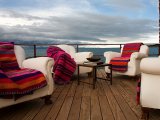 Titilaka Lodge, Puno
Titilaka Lodge, Puno Feeding the Manatees in the the Refuge, Iquitos
Feeding the Manatees in the the Refuge, Iquitos School Girls in Willoc, Sacred Valley
School Girls in Willoc, Sacred Valley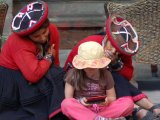 Technology vs. Tradition, Cuzco
Technology vs. Tradition, Cuzco Street Vendor, Cuzco
Street Vendor, Cuzco Cuzco
Cuzco Cuzco, Plaza del Armas (La Casona Hotel)
Cuzco, Plaza del Armas (La Casona Hotel)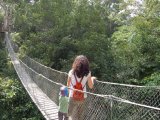 Canopy Walk in Tambopata, Peru
Canopy Walk in Tambopata, Peru Birdwatching in Lake Titicaca, Titilaka Lodge
Birdwatching in Lake Titicaca, Titilaka Lodge Titilaka Lodge - Terrace
Titilaka Lodge - Terrace